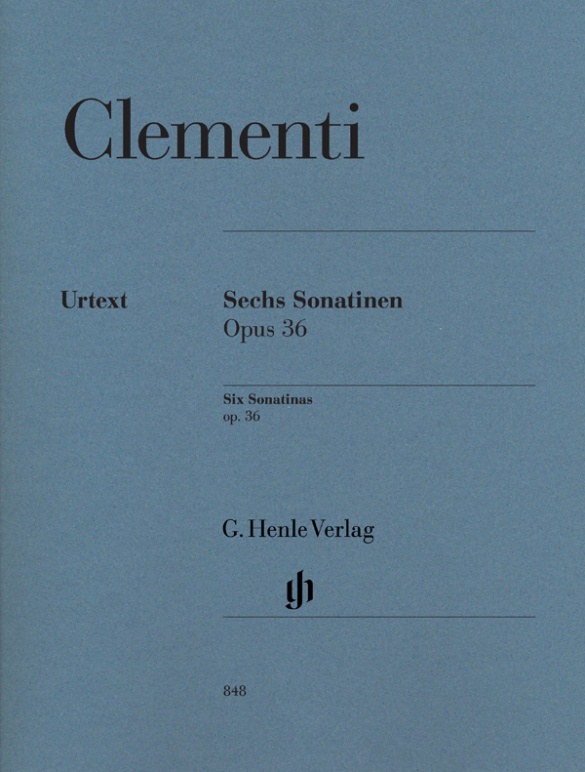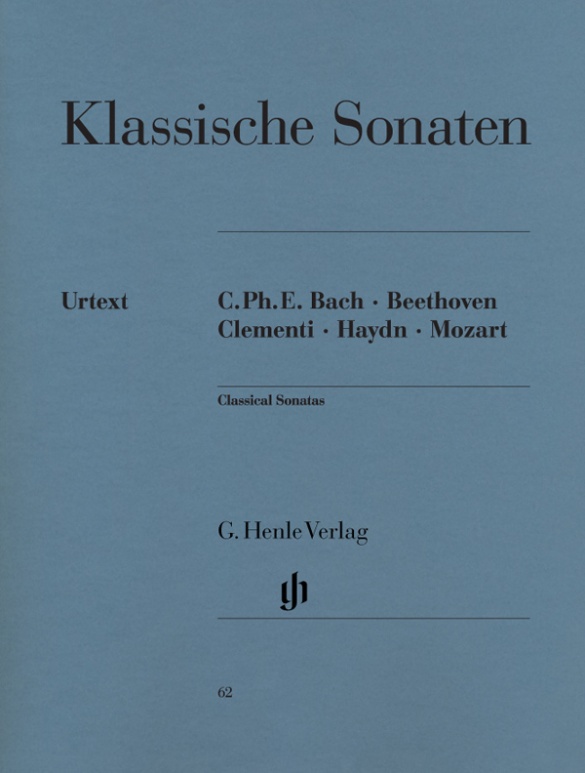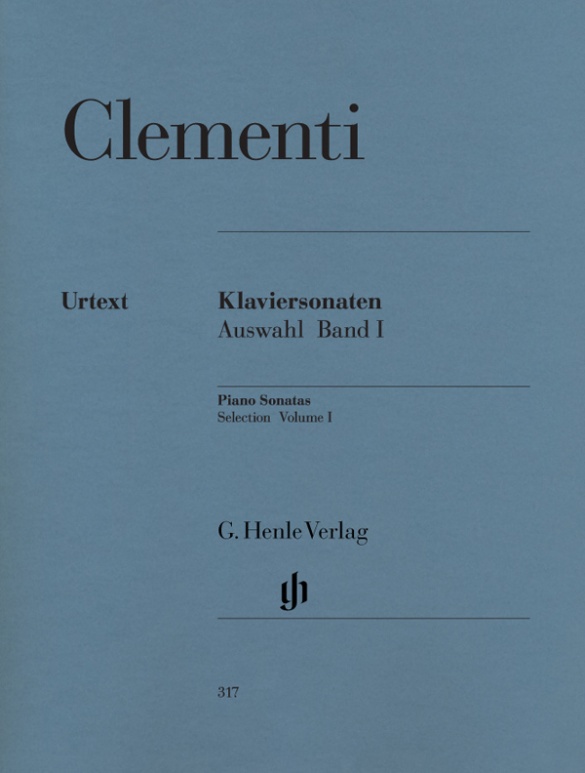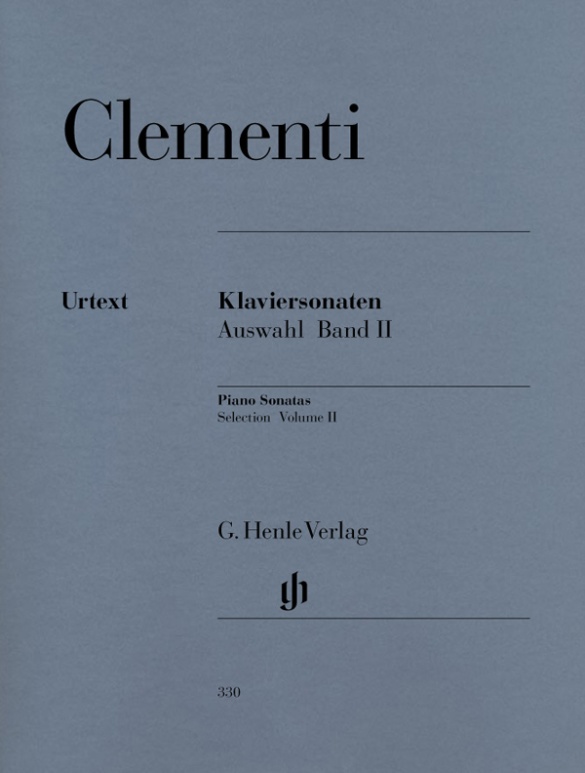

Muzio Clementi
Six Piano Sonatinas op. 36
Towards the end of the 18th century, Clementi increasingly advocated the piano as the successor to the harpsichord. He composed expressly for the new instrument and in 1801 published a piano school.
His interest in teaching is also shown by the “Six progressive Sonatinas” op. 36 – six sonatinas in ascending order of difficulty, which are still extremely popular with today's piano teachers. Our Urtext edition follows the long established practice of using the musical text of the first edition from 1797. Clementi’s original fingering, which is surprisingly modern, has been included throughout the work.
Content/Details
About the Composer

Muzio Clementi
A composer, pianist, keyboard-instrument manufacturer, and music publisher from Italy. His volumes of piano music, foremost among them the exercises from Gradus ad Parnassum, op. 44, continue to occupy a prominent position in piano pedagogy. As a manufacturer of keyboard instruments he contributed to the further development of the pianoforte. His efforts as a publisher included helping to establish the keyboard music of Johann Sebastian Bach throughout the world, and fostered the rediscovery of other Baroque composers. He mainly composed works for keyboard instruments, as well as orchestral and chamber music.
| 1752 | Born in Rome on January 23. First musical instruction from Antonio Boroni and others. |
| from 1766 | He is appointed organist at the church of San Lorenzo in Damaso for eight months. Thereafter he enters the musical service of the aristocrat Peter Beckford at his manorial home at Steepleton Iwerne in southern England. |
| from 1775 | through active concertgiving in London he establishes himself as a piano virtuoso. |
| from 1780 | A longer concert tour leads him, among other places, to Paris and Vienna, where he is introduced at court. |
| 1781 | On December 24, he enters a virtuoso competition against Wolfgang Amadeus Mozart initiated by Emperor Joseph II. |
| from 1785 | He is principal composer for the Hanover Square Grand Professional Concerts in London. |
| from 1802 | An eight-year business trip as publisher and keyboard manufacturer takes him through Europe. During this time his pupils, including John Field, present his keyboard instruments. |
| 1813–24 | He is director of the Royal Philharmonic Society in London. |
| 1814 | On December 7 he becomes a member of the Royal Swedish Academy of Music. |
| 1832 | Dies in Evesham (Worcestershire) on March 10. |
About the Authors

Ernst-Günter Heinemann (Editor)
Dr. Ernst-Günter Heinemann, born in 1945 in Bad Marienberg (Westerwald), completed his schooling in Gießen and read musicology, philosophy and German in Marburg and Frankfurt/Main and also for some time Protestant church music. He did his doctorate on “Franz Liszts geistliche Musik. Zum Konflikt von Kunst und Engagement”.
From 1978–2010 Heinemann worked as an editor at G. Henle Publishers (in 1978 in Duisburg, from 1979 onwards in Munich). He edited a great many Urtext editions for the publishing house, including “Das Wohltemperierte Klavier”, Volume 1 by Bach and all of Debussy’s piano works. In addition, he wrote essays on Debussy, Grieg, Liszt, Mendelssohn and questions concerning general editing, as well as giving seminars on editorial practice for musicology students in Munich.
Product Safety Informations (GPSR)

G. Henle Verlag
Here you can find the information about the manufacturer of the product.G. Henle Verlag e.K.
Forstenrieder Allee 122
81476 München
Germany
info@henle.de
www.henle.com
Henle's 2010 publication of these works is well up to their usual standard, with good quality paper, bar numbers, scholarly preface and a section commenting on variant readings and sources. Page turns are considerately placed and reading is made easy with the excellent printing. Little editorial intervention is noticed and the first edition is reproduced without added slurs or expression marks. Fingering is included, but who can complain when the fingering is Clementi's own?
Harpsichord & Fortepiano, 2014Many teachers consider Henle Verlag publications the "gold standard" of Urtext editions, particularly for advanced repertoire. Henle has recently published an Urtext edition of Clementi's Op. 36 Sonatinas, some of the most treasured works in the intermediate piano literature. This edition has the features teachers expect from Henle, especially reliance on original manuscripts and quality engraving on thick paper. ... Teachers who regularly teach these sonatinas should consider investing in the Henle edition – if not for students, then at least as a valuable reference for their own libraries.
American Music Teacher, 2012De nieuwe uitgave van Henle biedt twee bijzonderheden: Clementi's eigen inventieve, speciaal op beginners gerichte vingerzetting en (als voorbeeld) een latere versie van de eerste sonatine.
Piano Wereld, 2011Naast de prettig leesbare druk, die we van deze uitgever gewend zijn, is er een drietal zaken waardoor de uitgave de moeite waard is. Allereerst valt het gedegen voorwoord op ... Op sommige plaatsen zijn ze verrassend anders dan wat we in de meeste sonatinealbums aangereikt krijgen.
Piano Bulletin, 2011recommendations
autogenerated_cross_selling
Further editions of this title
Further editions of this title





